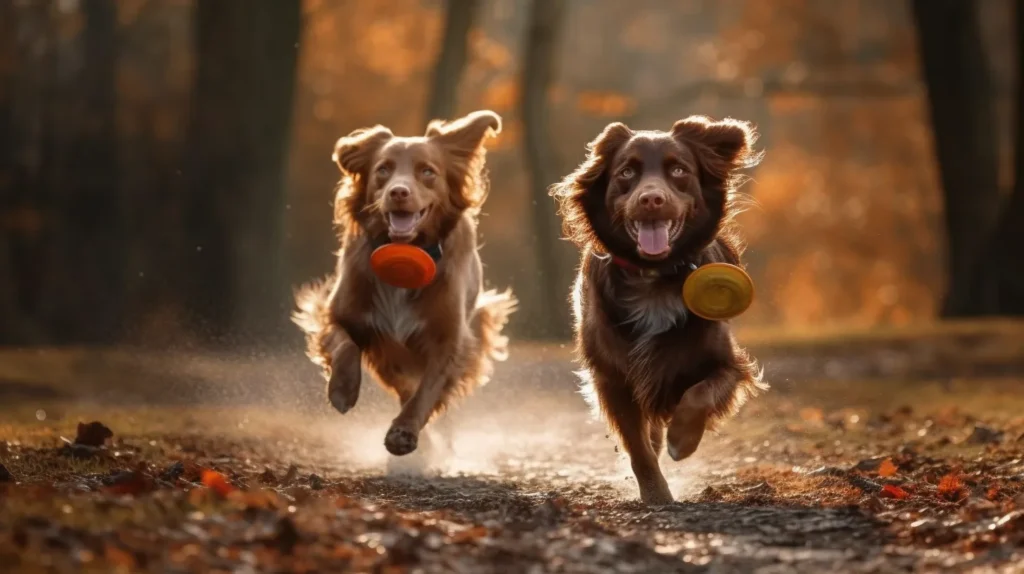
Bark, Whine, Wag: Decoding Your Dog’s Sounds and Expressions
As pet owners, we often find ourselves marveling at the ability of dogs to express themselves without the use of words. Dogs have their unique language, a complex system of sounds, body movements, and facial expressions to communicate their needs, emotions, and intentions. In order to strengthen our bond with our furry companions, it is essential to understand and interpret their communication cues accurately. This article aims to decode the various sounds and expressions our dogs use, providing valuable insights into their world of communication. By learning to decipher barks, whines, tail wags, and more, we can deepen our understanding of our canine friends and foster a stronger connection based on trust and effective communication.
1. Understanding Canine Communication: An Introduction
The Importance of Communication in Dogs
We all know that dogs are man’s best friend, but did you know they’re also experts in non-verbal communication? Understanding how dogs communicate is crucial for building a strong bond with our furry companions. It allows us to respond to their needs, prevent misunderstandings, and enhance the overall quality of our relationship.
The Role of Vocalizations and Body Language
When it comes to canine communication, vocalizations and body language play a starring role. Just like humans, dogs have their own unique language to express their emotions, desires, and intentions. By paying attention to their barks, whines, howls, tail wagging, ear position, and facial expressions, we can unravel the mysteries behind their actions and better understand what our four-legged friends are trying to tell us.
2. Decoding Vocalizations: Bark, Whine, and Howl

The Different Types of Barks and Their Meanings
Ah, barking – the classic sound of a dog trying to get our attention. But did you know that there are different types of barks? From the sharp, high-pitched “alert” bark to the deep, continuous “territorial” bark, each bark carries its own meaning. By deciphering these vocalizations, we can determine whether our pup is feeling anxious, excited, protective, or simply looking for a game of fetch.
Understanding Whining and Its Various Contexts
Whining can be a dog’s way of expressing a range of emotions, from excitement and anticipation to fear or discomfort. When deciphering their whining, it’s essential to consider the context. Is your dog eagerly awaiting a treat, feeling anxious during a thunderstorm, or requesting to go outside? By understanding the different contexts in which dogs whine, we can respond appropriately and meet their needs.
Interpreting Howling: Expressions of Communication and Instinct
Ever heard a dog howl at the moon and wondered why they do it? Howling is deeply ingrained in a dog’s DNA and serves as a means of communication and instinctual expression. Whether they are trying to locate their pack, seek attention, or simply joining a chorus they find irresistible, howling has a unique way of conveying emotions that can vary from loneliness to pure joy.
3. Interpreting Body Language: Tail Wagging, Ear Position, and Posture
The Language of the Tail: Wagging, High, Low, and Slow Movements
A wagging tail is often a sign of a happy dog, right? Well, not always! The way a dog wags its tail can reveal much more about their emotions than mere happiness. The height, speed, and stiffness of the tail all play a role in deciphering their mood. From a high and rapid wag indicating excitement to a low and slow wag signaling caution, the tail serves as a waggy barometer of their feelings.
What Your Dog’s Ear Position Says About Their Mood
If eyes are the windows to the soul, then ears are the satellite dishes of a dog’s emotions. A dog’s ear position can give us valuable insight into how they’re feeling. Whether their ears are perked up in curiosity, pinned back in fear, or relaxed in contentment, understanding these subtle cues can help us respond appropriately and create a sense of trust and security.
Deciphering Posture: Dominance, Submission, and Confidence
Posture speaks volumes in the world of dogs. The way they carry themselves can indicate dominance, submission, or confidence. From a stiff and upright stance suggesting assertiveness to a low and cowering posture representing submissiveness, becoming fluent in the language of their body can foster a stronger understanding and a harmonious relationship.
4. Facial Expressions: Reading Your Dog’s Eyes, Mouth, and Brow

The Importance of Facial Expressions in Canine Communication
While we may not see our dogs’ full range of facial expressions like we do with other humans, their eyes, mouth, and brow movements can still provide us with valuable insights into their emotional state. Understanding these facial cues allows us to gauge their happiness, fear, anxiety, or even their desire for a tasty treat.
Understanding Eye Contact and Eye Movements
The famous saying goes, “Eyes are the window to the soul,” and this holds true for our furry friends too. Eye contact and movements can convey various messages, from a loving gaze symbolizing affection to averted eyes indicating fear or submission. Knowing how to interpret these signals allows us to respond appropriately and build a deeper connection with our dogs.
Interpreting Mouth Movements: Yawning, Licking, and Lip Curls
Our dogs may not engage in chit-chat like we do, but their mouths have their own language. A yawn might be a sign of stress, a lick could be an appeasement behavior, and a subtle lip curl might show discomfort. By paying attention to these mouth movements, we can better understand their emotional state and respond with empathy.
The Role of Brow Furrowing and Raised Eyebrows
Who knew that furrowing brows and raising eyebrows weren’t just for humans? Our dogs can also use these facial expressions to communicate with us. Raised eyebrows can indicate curiosity, while furrowed brows might suggest concern or confusion. So, the next time your pup raises an eyebrow, don’t just brush it off – it could be their way of saying, “Hey, I’m trying to tell you something!”
And there you have it! By learning to decode your dog’s sounds and expressions, you can become a true canine whisperer, connecting with your furry friend on a whole new level. So, put on your detective hat, observe their barks, whines, tail wags, ear positions, posture, and facial expressions, and get ready for a closer, more meaningful bond with your beloved pup!ing Barks from Alert Barks

5. The Language of the Eyes: Reading Your Dog’s Expressions
The Slow Blink: Trust and Relaxation
Bark, Whine, Wag: Decoding Your Dog’s Sounds and Expressions
Dogs have a language all their own, and understanding their different sounds and expressions can greatly enrich your bond with your furry friend. From tail movements to body language, they constantly communicate their thoughts and emotions. In this article, we’ll decode some of the most common dog sounds and expressions so you can better understand what your dog is trying to tell you.
6. The Art of Tail Talk: What Different Tail Movements Mean
They say a wagging tail means a happy dog, but it’s not always that simple. Different tail movements can convey different messages, so let’s take a closer look.
– Excitement and Happiness: The Energetic Wag
When your dog is excited and happy, you’ll notice a vigorous and wide wag that involves their whole body. It’s a sign that they’re thrilled to see you or engage in play.
– Nervousness and Anxiety: Tucked Tail or Slow Wag
A tucked tail or a slow wag usually indicates nervousness or anxiety. It’s their way of saying they’re unsure or uncomfortable with the current situation. Give them some space or try to identify the cause of their unease.
– Aggression and Fear: Stiff Tail or High, Rapid Wag
If your dog’s tail appears stiff or they wag it rapidly and high, it can be a sign of aggression or fear. They may feel threatened or want to establish dominance. It’s crucial to assess the situation carefully and ensure everyone’s safety.

7. Communication in Action: Unraveling Playful, Aggressive, and Fearful Behaviors
Beyond tail movements, dogs express themselves through various behaviors. Let’s explore some of the most common ones.
– Understanding Playful Behaviors: Invitation, Bowing, and Play Biting
Playful behaviors include inviting you to play, bowing down with their front legs extended, and gentle play biting. These actions are their way of engaging in fun and bonding with you.
– Identifying Aggressive Signals: Growling, Bared Teeth, and Snapping
Growling, bared teeth, and snapping are clear signs of aggression. It’s important to address these behaviors calmly and seek professional help if needed to prevent any harm or escalation.
– Recognizing Fearful Behaviors: Cowering, Trembling, and Submissive Urination
Fearful behaviors like cowering, trembling, and submissive urination indicate that your dog is scared or anxious. Provide a safe and comforting environment to help them feel secure.
8. Barking for Attention: Separating Needs, Wants, and Alerts
Barking is one of the most common ways dogs communicate, but what are they trying to say?
– Differentiating Attention-Seeking Barks from Alert Barks
Attention-seeking barks are usually repetitive and accompanied by jumping or pawing. On the other hand, alert barks are sharper and more focused, with the intention of warning you about something unusual or alarming.
– Understanding the “I Want Something” Bark
When your dog wants something, they may use a specific bark to get your attention. It’s their way of letting you know they desire food, a walk, or some playtime.
– Recognizing the “I’m Scared” or “I’m Alone” Bark
A distressed or anxious dog may bark differently to convey their fear or loneliness. It’s important to listen and understand their needs, offering reassurance and companionship if required.
9. The Language of the Eyes: Reading Your Dog’s Expressions
Eyes are often referred to as the windows to the soul, and that holds true for dogs too.
– The Puppy Eyes: Begging or Manipulating?
You know those adorable puppy eyes your dog gives you? While they might seem irresistible, they can be a tactic to manipulate you into getting what they want. Use your judgment wisely!
– The Side Eye: A Sign of Discomfort or Disapproval
When your dog gives you a sideways glance, it could mean they’re uncomfortable or disapprove of something. It’s essential to be attentive and see if there’s anything that might be causing their discomfort.
– The Wide Eyes: Fear or Excitement?
Wide eyes can indicate both fear and excitement. Look for other body language clues to determine which emotion your dog is experiencing.
– The Slow Blink: Trust and Relaxation
A slow blink from your dog is a sign of trust and relaxation. It’s their way of showing that they feel comfortable and at ease in your presence.
Understanding your dog’s sounds and expressions is a key aspect of being a responsible and attentive pet owner. By decoding their language, you’ll be able to better meet their needs, provide support when they’re anxious, and strengthen your bond with them. So, next time your dog “speaks,” don’t hesitate to listen, observe, and respond with love and understanding.
By becoming fluent in the language of our dogs, we can bridge the gap between species and establish a deeper level of understanding and connection. Paying attention to their vocalizations, body language, and facial expressions allows us to better meet their needs, address their fears, and celebrate their joys. Through this ongoing dialogue, we can forge a stronger bond with our canine companions, enriching both their lives and ours.
So, the next time your dog barks, whines, or wags their tail, take a moment to decode their message and respond with empathy and care. Together, we can create a harmonious and fulfilling relationship with our furry friends.
Frequently Asked Questions

1. Can dogs understand human language?
Dogs may not understand human language in the same way we do, but they are highly perceptive to our tone of voice, body language, and facial expressions. They can learn to associate certain words or commands with specific actions or behaviors, making communication easier between humans and dogs.
2. Why is it important to understand my dog’s body language?
Understanding your dog’s body language is crucial for their well-being and your safety. It allows you to recognize signs of discomfort, fear, or aggression, helping you respond appropriately and prevent potential conflicts. Additionally, being attuned to your dog’s body language strengthens your bond and allows for more effective communication.
3. Is tail wagging always a sign of happiness?
No, tail wagging does not always indicate happiness. While a loose and wide wag often signifies joy and excitement, a tucked tail or rapid, stiff wag can indicate fear, anxiety, or aggression. It is essential to consider the context, accompanying body language, and other signals to accurately interpret your dog’s emotions.
4. Are there any universal meanings for dog vocalizations?
While certain vocalizations like barking, whining, and howling can have general meanings, each dog may have their own unique way of communicating. For example, a high-pitched bark may indicate excitement in one dog but indicate fear in another. Understanding your individual dog’s vocalizations within their specific context is key for accurate interpretation.

